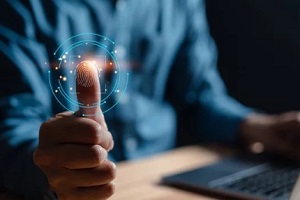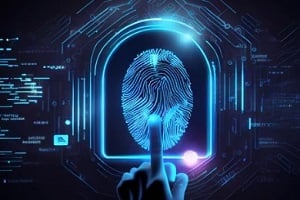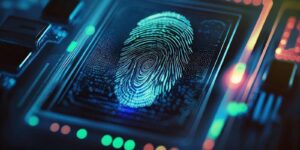Traditionally, fingerprinting was performed using an ink method which involved pressing each finger pad in ink and then rolling them onto a fingerprint card. Advances in technology have allowed many organizations to forgo traditional ink fingerprinting in favor of live scan fingerprinting.
Live scanning involves capturing a person’s fingerprints electronically and saving them digitally. Digital fingerprints are then transmitted to a state repository and/or the FBI. Live scan technology enables fingerprint technicians to retake a print multiple times to ensure that they capture the best images possible.
Today, many law enforcement agencies and police departments are making the transition to live scan fingerprinting to aid in investigations and increase print accuracy. Before getting started with this technology, here are some important things to know.
How Does Live Scan Fingerprinting Work?
 Live scan fingerprinting technology allows you to scan a person’s fingerprints using an electronic scanner. Their personal information is also inputted into the system and electronically submitted to the appropriate state or federal agency for processing.
Live scan fingerprinting technology allows you to scan a person’s fingerprints using an electronic scanner. Their personal information is also inputted into the system and electronically submitted to the appropriate state or federal agency for processing.
Live scan fingerprinting is generally used to perform background checks or obtain accurate information about a person’s identity. With live scan fingerprinting, everything is 100 percent electronic, meaning no more ink smudges.
What Purposes Is Live Scan Fingerprinting Used for?
Live scan fingerprinting is used for a range of purposes within organizations and agencies across the country. Digital fingerprinting has become a common step for individuals applying for professional licenses, such as medical, attorney and contractor’s licenses.
It is also commonly required when applying for certain permits and certifications, such as a petition for adoption or a permit to carry a concealed weapon. Certain volunteer positions and job applications, especially those in educational environments, may require live scan fingerprinting.
Live scan fingerprinting may also be used for other purposes, such as applying for visa applications, immigration purposes, or upon recommendation from an attorney to check on a case. Some individuals may request digital fingerprinting for personal review, such as if a person wants to know if there is a criminal record linked to their fingerprints.
What Do You Need for Live Scan Fingerprinting?
First, a person must complete a Request for Live Scan Submission form. This form is typically provided by the requesting agency, but the requesting agency may provide instructions on how to obtain this form.
Next, they must submit identification, such as a valid driver’s license. Other types of photo ID, such as a U.S. or foreign passport, may also be accepted but may require a secondary form of identification.
Finally, there is generally a fee involved in performing live scan fingerprinting. The live scan operator may charge a fee, known as a rolling fee, which includes the use of the service. The live scan operator may also collect another fee on behalf of the state’s Department of Justice.
Benefits of Live Scan Fingerprinting
Live scan fingerprinting has quickly become the method of choice for obtaining fingerprints. There are many key benefits of using this technology, especially for law enforcement. Some of these benefits include:
 Fast Results – With traditional ink fingerprinting, the results would need to be manually sent to the appropriate agency or department for processing, which could take days or weeks. Live scan fingerprinting results can be submitted electronically in seconds and processed considerably faster. This enables law enforcement to streamline investigations and get the information they need for proper identification.
Fast Results – With traditional ink fingerprinting, the results would need to be manually sent to the appropriate agency or department for processing, which could take days or weeks. Live scan fingerprinting results can be submitted electronically in seconds and processed considerably faster. This enables law enforcement to streamline investigations and get the information they need for proper identification.- Greater Clarity – Live scan fingerprinting has been found to deliver much cleaner results compared to traditional ink fingerprinting. As digital fingerprinting does not use ink to get a person’s prints, the potential for human error is significantly reduced.
- Convenient Transmission – Live scan fingerprints are performed completely electronically, meaning fingerprint images can also be transmitted electronically. The precise scans can be transmitted to the appropriate agency or department with just a few clicks of a button.
- Eco-Friendly – Many agencies in the U.S. are taking the essential steps to become more environmentally conscious. One way that law enforcement can take action to help the environment is by using live scan fingerprinting. Digital fingerprints eliminate the need for paper fingerprinting cards, which can save valuable resources.
Rely on CPI OpenFox for Innovative Law Enforcement Solutions
At CPI OpenFox, we provide live scan fingerprinting software that is customized to submit fingerprints to regulated authorities, such as the FBI. To learn more about our police background check software or other products, schedule a consultation with us today.
CPI OpenFox is a leading information-sharing solutions provider dedicated to aiding law enforcement agencies and departments across the country. CPI offers a wide selection of products and solutions that are state-of-the-art, cost-effective and designed to keep the public safe.


